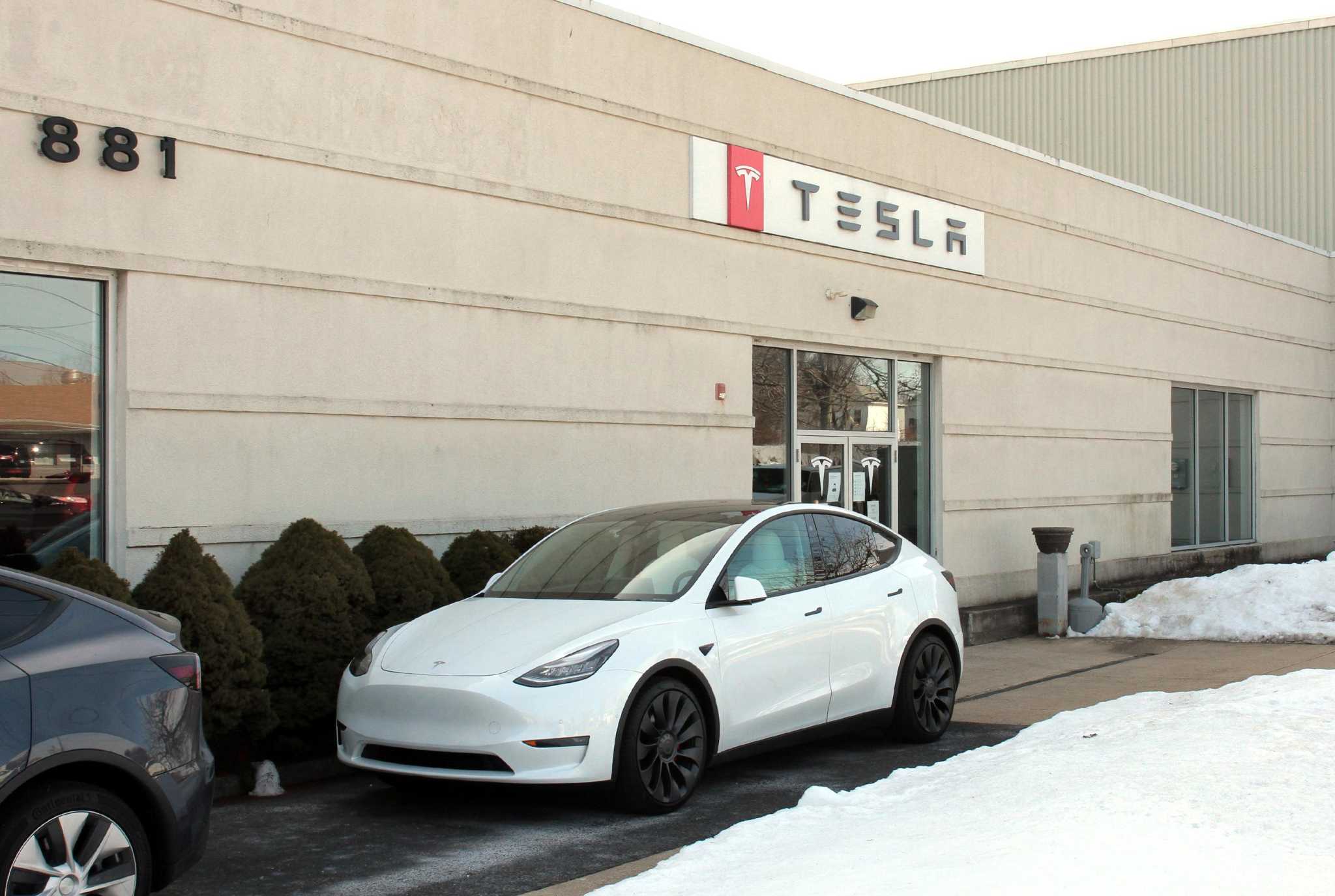The Auto Industry's Renewed Opposition To Electric Vehicle Regulations

Table of Contents
Economic Concerns Fueling Industry Resistance
The auto industry's opposition to stringent EV regulations is largely rooted in significant economic concerns. The transition to electric vehicles represents a massive undertaking, requiring substantial investments across the entire automotive value chain.
High Upfront Costs of EV Production and Infrastructure
The argument centers on the high upfront costs associated with EV manufacturing and the necessary supporting infrastructure. The industry claims that:
- High battery costs: Currently, lithium-ion batteries represent a significant portion of an EV's cost, making them less price-competitive than internal combustion engine (ICE) vehicles.
- Lack of economies of scale: The relatively lower production volumes of EVs compared to gasoline cars hinder the achievement of economies of scale, keeping production costs high.
- Insufficient charging infrastructure: The widespread adoption of EVs necessitates a significant expansion of the charging infrastructure, particularly in rural and underserved areas, requiring considerable investment.
- Potential job losses in the ICE sector: The rapid shift away from internal combustion engines poses a threat to jobs in the existing automotive workforce, particularly those involved in the manufacturing and maintenance of ICE vehicles.
Consumer Demand and Market Readiness
Another key argument revolves around consumer demand and market readiness. The industry contends that:
- Range anxiety: Consumers remain hesitant due to concerns about limited driving range on a single charge.
- Charging time concerns: Compared to the quick refueling of gasoline cars, charging EVs can take significantly longer.
- Higher purchase prices: The initial purchase price of EVs is generally higher than comparable gasoline-powered vehicles.
- Limited model choices: The variety of EV models available is still limited compared to the wide range of ICE vehicles.
- Lack of consumer awareness: Many consumers remain unaware of the benefits of EVs or lack access to information about EV technology and incentives.
Impact on Smaller Manufacturers and the Supply Chain
The transition to EVs presents significant challenges for smaller automakers and suppliers. The industry argues that:
- Financial burdens on smaller companies: Smaller manufacturers may lack the financial resources to invest in the necessary technology and infrastructure for EV production.
- Potential disruptions to the existing supply chain: The shift to EV components and manufacturing processes could disrupt the existing supply chain, leading to potential shortages and delays.
- Difficulty in accessing funding for EV technology: Smaller companies may struggle to secure the funding needed for research, development, and deployment of EV technology.
Technological Challenges and Regulatory Hurdles
Beyond economic factors, technological limitations and regulatory uncertainty contribute to the auto industry's resistance.
Battery Technology Limitations
Current battery technology faces several limitations that impede wider EV adoption:
- Need for improved battery chemistry: Research and development efforts are focused on improving battery chemistry to increase energy density, range, and lifespan.
- Faster charging technologies: The development of faster charging technologies is crucial to address consumer concerns about charging times.
- Development of more sustainable battery materials: The industry is striving to develop more sustainable and ethically sourced materials for battery production.
- Battery recycling infrastructure: Establishing robust battery recycling infrastructure is vital for environmental sustainability and resource recovery.
Grid Capacity and Renewable Energy Sources
The increasing number of EVs will put a strain on electricity grids and increase reliance on renewable energy sources:
- Investment in grid infrastructure upgrades: Significant investments are needed to upgrade electricity grids to handle the increased demand from EV charging.
- Expansion of renewable energy generation capacity: A greater reliance on renewable energy sources is necessary to reduce the carbon footprint of EV charging.
- Challenges of integrating intermittent renewable energy: Integrating intermittent renewable energy sources, such as solar and wind power, into the electricity grid presents technological challenges.
Regulatory Uncertainty and Inconsistent Policies Across Regions
Inconsistent and rapidly changing EV regulations across different jurisdictions create challenges for the industry:
- Need for clear, consistent, and long-term policies: The industry needs clear, consistent, and long-term policies to guide investment decisions and facilitate the transition to EVs.
- Difficulties in planning long-term investments under uncertain regulatory environments: Uncertainty about future regulations makes it difficult for automakers to plan long-term investments in EV technology and infrastructure.
The Counterarguments and Future of EV Adoption
While the auto industry raises valid concerns, counterarguments emphasize the environmental imperative and the potential for government support.
Environmental Benefits and Long-Term Sustainability
The overwhelming scientific consensus highlights the crucial role of EVs in mitigating climate change:
- Reduction in air pollution: EVs produce zero tailpipe emissions, contributing to improved air quality in urban areas.
- Lower carbon footprint compared to gasoline cars: Even considering electricity generation, EVs generally have a lower carbon footprint than gasoline-powered vehicles.
- Contribution to achieving climate targets: Widespread EV adoption is essential for achieving global climate targets and reducing greenhouse gas emissions.
Government Incentives and Support for EV Adoption
Government policies play a vital role in accelerating EV adoption:
- Tax breaks for EV purchases: Tax credits and rebates can make EVs more affordable for consumers.
- Subsidies for charging infrastructure development: Government subsidies can incentivize the development and deployment of charging infrastructure.
- Government funding for battery research: Government funding can accelerate research and development in battery technology.
Technological Advancements and Future Innovation
Technological advancements are rapidly improving EV performance and affordability:
- Improved battery ranges: Battery technology is continuously improving, leading to longer driving ranges.
- Faster charging capabilities: Faster charging technologies are being developed to reduce charging times.
- Development of solid-state batteries: Solid-state batteries promise even greater energy density, safety, and lifespan.
- Cost reductions due to economies of scale: As EV production increases, economies of scale will lead to cost reductions.
Conclusion
The debate surrounding electric vehicle regulations is multifaceted, with the auto industry expressing legitimate concerns about economic viability, technological hurdles, and regulatory uncertainty. However, the environmental imperative for reducing greenhouse gas emissions and the potential for government intervention to support EV adoption remain compelling counterarguments. Finding a balanced approach that addresses the industry's concerns while accelerating the transition to electric vehicles is crucial. Stay updated on the latest developments in electric vehicle regulations and learn more about the challenges and opportunities in the EV transition. Engage in the conversation about the future of electric vehicle adoption – our planet’s future depends on it.

Featured Posts
-
 Indias Nifty 50 Analyzing The Factors Behind The Recent Rally
Apr 24, 2025
Indias Nifty 50 Analyzing The Factors Behind The Recent Rally
Apr 24, 2025 -
 Klaus Schwab Under Scrutiny World Economic Forum Faces New Inquiry
Apr 24, 2025
Klaus Schwab Under Scrutiny World Economic Forum Faces New Inquiry
Apr 24, 2025 -
 The Instagram Vs Tik Tok Battle Heats Up A New App Enters The Fray
Apr 24, 2025
The Instagram Vs Tik Tok Battle Heats Up A New App Enters The Fray
Apr 24, 2025 -
 Teslas Q1 Profit Decline Impact Of Musks Controversial Role
Apr 24, 2025
Teslas Q1 Profit Decline Impact Of Musks Controversial Role
Apr 24, 2025 -
 Watch John Travolta Indulges In A Pulp Fiction Themed Steakhouse Meal In Miami
Apr 24, 2025
Watch John Travolta Indulges In A Pulp Fiction Themed Steakhouse Meal In Miami
Apr 24, 2025
